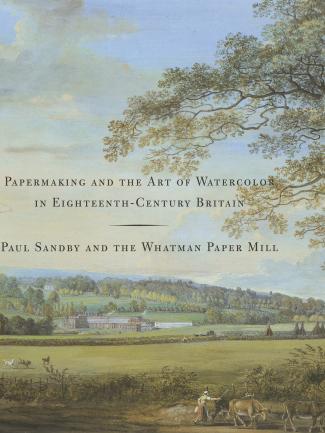In 1794 the papermaker James Whatman the Younger commissioned Paul Sandby, Royal Academician and one of Britain’s foremost watercolor painters, to record Whatman’s home and his celebrated paper mill in Kent. Sandby painted his portrait of the house and mill in opaque watercolors, or gouache, on a large sheet of “Whatman” paper. This watercolor, which remained in the Whatman family until its purchase by the Center in 2002, is both a superb example of Sandby’s art and an important document of the rise of industry in the British countryside and of the intertwined developments of papermaking and watercolor painting.
The watercolor of the Whatman estate and Turkey Mill was the focus of an exhibition that placed the painting within Sandby’s oeuvre, examined the role of the Whatmans and Turkey Mill in the history of papermaking in Britain, and explored how the developments in the technology of papermaking both contributed and responded to the distinctively British development of the art of painting in watercolors.
View works from the collection included in this exhibition here.
Credits
The exhibition was curated by Theresa Fairbanks Harris, Chief Conservator at the Center; and Scott Wilcox, Curator of Prints and Drawings; with research assistance from Andrea Wolk, Research Associate and Yale History of Art graduate student.
Top image
Mr. Whatman’s Mill: Papermaking and the Art of Watercolor in Eighteenth-century Britain installation, Yale Center for British Art, photo by Richard Caspole
Extended reading

Papermaking and the Art of Watercolor in Eighteenth-Century Britain: Paul Sandby and the Whatman Paper Mill
Edited by Theresa Fairbanks-Harris and Scott Wilcox